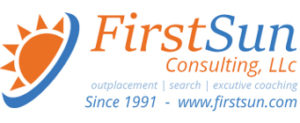#Leadership : #BossRelationship – Exactly What to Say in These 7 Difficult Conversations with your Boss. A Must REad!
Nearly one-third of professionals admit they’d rather work an extra six hours a week than seek help in the workplace, according to a recent report from LinkedIn. This stands in sharp contrast to the number of professionals who said they’ve needed help at some point in their career.
An overwhelming majority (84%) of respondents confessed this, and among their chief concerns were dealing with stress, challenges with colleagues or managers, starting new projects, and making mistakes.
Of course, it’s easier to confide in a compassionate colleague, but be warned: If you avoid talking to your supervisor, you could be making things even worse.
If the thought of approaching your boss to ask for a raise, try your hand at a new project, or simply sharing some challenging feedback has you shaking in your shoes, take heart. We’ve asked a number of leaders to offer advice on what to say and how to say it. You’re welcome.
DIFFICULT CONVERSATION 1: “YOUR MANAGEMENT STYLE ISN’T WORKING FOR ME.”
The first step for the discussion is to be aware of how you’re feeling as an employee. Second, you need to reframe the conversation to be around learning and growing. Upward feedback isn’t an opportunity to tell off your manager, it’s an opportunity to help them become a better leader. Hold their success as your intention, and then clearly and directly share what you are seeing and what isn’t working. If you are genuinely connecting with your manager and caring about their future and their success, the manager will receive your feedback.–David Hassell, cofounder and CEO, 15Five
DIFFICULT CONVERSATION 2: “I’M EXPECTING A BABY.”
Sharing the news that you’re pregnant should be as exciting at the workplace as it is with friends and family. But for too many women it’s an unnecessarily stressful conversation with their boss, usually out of uncertainty about the futures of their careers. Nearly twice as many women are nervous to tell their boss they’re pregnant than five years ago, according to Bright Horizons’ fifth annual Modern Family Index.
Before speaking with your boss, take some time to check in with yourself. Know the value you bring to your team and the company, and have an action plan in place for your maternity leave and return to the company. Most importantly, go into the conversation confident and with a positive attitude. This is a great opportunity for you to learn more about the benefits your company provides for expecting and new parents, and for preparing for a new phase in what it means to be able to bring your whole self to work.--Maribeth Bearfield, chief human resources officer, Bright Horizons
Like this Article ? Share It ! You now can easily enjoy/follow/share Today our Award Winning Articles/Blogs with Now Over 2.5 Million Growing Participates Worldwide in our various Social Media formats below:
FSC LinkedIn Network: www.linkedin.com/in/fscnetwork
Facebook: http://www.facebook.com/pages/First-Sun-Consulting-LLC-Outplacement-Services/213542315355343?sk=wall
Google+: https://plus.google.com/115673713231115398101/posts?hl=en
Twitter: Follow us @ firstsunllc
Question: Want the ‘the best/current articles/blogs on the web’ on Job Search, Resume, Advancing/Changing your Career, or simply Managing People?
Answer: Simply go to our FSC Career Blog below & type(#career, #leadership, #life)in Blog Search: https://www.firstsun.com/fsc-career-blog/
What Skill Sets do You have to be ‘Sharpened’ ?
Continue of article:
DIFFICULT CONVERSATION 3: “I’VE MADE A MISTAKE.”
It’s important to address it honestly and take ownership. One of the most frustrating things as a manager is when someone immediately starts blaming everyone else instead of taking responsibility. Be solutions-oriented, sharing what happened and how you plan to fix it. I would also suggest sharing what you learned from the experience and what you’ll do to ensure it won’t happen again. This is a great opportunity to showcase your growth mind-set. Every single person makes mistakes. But you have the opportunity to show what kind of person and employee you are in how you address, fix, and learn from them.--Sarah Alpern, vice president of user experience, LinkedIn
DIFFICULT CONVERSATION 4: “I WANT A RAISE. (BUT DEEP DOWN I DON’T FEEL LIKE I DESERVE IT.)”
Asking your boss or supervisor for a raise when you deal with imposter syndrome can feel scary–especially as you may feel alone in the doubt, fear, and questions you have about your abilities, skills, and contributions to the workplace. As a female leader, I often struggle with imposter syndrome and frequently doubt the accomplishments that I set out to achieve.
One tip to overcome this is to constantly write down your contributions and where you provide the most value in the workplace–ranging from small, tactical wins to big successes. Then, when you’re looking to ask for a raise, come to the meeting prepared with a set agenda and speak to the accomplishments or goals you’ve completed throughout your time as an employee. Showing the value you provide to your team and workplace when speaking to your manager will not only minimize the doubts that come along with imposter syndrome, but it will also emphasize your capability and worthiness of a raise or promotion.
Another great option is to look for those outside of your workplace who can cheer you on and provide words of encouragements before asking for a raise. For me, having my daughter as my biggest cheerleader and seeing in her eyes how proud she is of me gives me the energy and passion to keep going. Find those sources of energy for you and keep them in mind when you show up to work each day. When you come to work with positive energy and feel motivated, talking about uncomfortable topics with managers will become less challenging.--Andee Harris, president, YouEarnedIt/HighGround
DIFFICULT CONVERSATION 5: “I GOT ANOTHER, BETTER JOB OFFER.”
If you want to keep your job, approach your boss with a shared problem–you’d like to stay, but the market price for people like you has gone up. And while you love your current work and responsibilities, you’d also like to care of your family/yourself. So ask if your current boss can take this compensation issue off the table by matching the competitive offer so that you can do the right thing. Warning: You only get to do this every two years or so until you’re considered a mercenary, so make sure it is worth bringing up with her or him.
If you want to leave, be pleasant, polite, and persistent. Say something like: ‘I’ve decided that what’s best for me for my career is that I’m going to be taking a new role at Acme. I thank you very much for your time and the experience here.’ Two weeks’ notice is still the bare minimum to be considered not burning your bridges. Offer to assist with the transition, and be firm that you’re not considering staying at this time.–Marc Cenedella, CEO of Ladders
DIFFICULT CONVERSATION 6: “I HAVE AN IDEA FOR A NEW PRODUCT BUT DON’T HAVE THE AUTHORITY TO DEVELOP IT INDEPENDENTLY.”
You should always come from the perspective of driving value for your customers. Pitch the product or solution from the perspective of how this solution helps customers or users be more effective and efficient. From there, focus on clearly defined ownership, the best ways to collaborate, and overall resourcing. Bosses love to see plans that are well thought through and will be happy to support you as a result.–Maria Zhang, VP of engineering, LinkedIn
DIFFICULT CONVERSATION 7: “I NEED HELP ASSESSING MY SKILLS SO I CAN DEVELOP AS A LEADER.”
While the role of your manager is to develop you and unlock your potential, it is also important for you to be thoughtful and proactive in your approach to your own career development. This starts with being self-aware and knowing what is expected of you in your role and how your success will be measured. When you meet with your manager, along with setting and checking on core goals for your role, share your perspective on where you want to grow, and how you’d like to accomplish that. Ask for your manager’s feedback and partnership to define ways to stretch yourself professionally. Don’t forget to then track your results and report on your progress. In addition, don’t count out your peers! If your colleague is a stellar salesperson, ask if you can shadow them. It helps to learn from the best.--Ty Heath, global lead, Market Development LMS
Regardless of the issue, know that you’re not alone. “Approaching difficult conversations with your manager is never easy, no matter what your relationship is like with your boss,” says Alexandra Clarke, director of recruiting for ForceBrands. Overall, she says, to ensure the direction of the conversation is healthy and productive, regardless of how tricky the topic, make sure you have a plan, purpose, and agendabefore you have the conversation.
Ask for feedback and advice where necessary, Clarke maintains, and always listen. Most importantly, she adds, be professional. “Be receptive and open to the idea that even if the meeting doesn’t go as planned, you were able to engage in a difficult conversation that won’t compromise or undermine your role,” Clarke explains, “and before leaving the discussion, suggest scheduling a follow-up meeting to regroup on the topic in a few days.”
ABOUT THE AUTHOR
FastCompany.com | January 30, 2019











 After an injury prevented Lewis Howes from continuing to play professional football, he became a New York Timesbestselling author and lifestyle entrepreneur—with a podcast aimed at sharing “inspiring stories from the most brilliant business minds, world-class athletes and influential celebrities on the planet to help you find out what makes great people great,” according to
After an injury prevented Lewis Howes from continuing to play professional football, he became a New York Timesbestselling author and lifestyle entrepreneur—with a podcast aimed at sharing “inspiring stories from the most brilliant business minds, world-class athletes and influential celebrities on the planet to help you find out what makes great people great,” according to  Ready for a change in your career—a new job, or even a new career path? If so, the Pivot podcast is for you. On the podcast, host Jenny Blake, the author of Pivot: The Only Move That Matters Is Your Next One and former Google career coach, inspires you to find “opportunity in unexpected places through practical tips and tools,” according to the
Ready for a change in your career—a new job, or even a new career path? If so, the Pivot podcast is for you. On the podcast, host Jenny Blake, the author of Pivot: The Only Move That Matters Is Your Next One and former Google career coach, inspires you to find “opportunity in unexpected places through practical tips and tools,” according to the  The Accidental Creative tackles topics and asks questions we can all relate to: Is it always wrong to copy? What are the common factors of change-makers? Why do we put pressure on ourselves to always be successful? No matter where you are in your career, you will find something on Accidental Creative, hosted by Todd Henry, that will speak directly to you.
The Accidental Creative tackles topics and asks questions we can all relate to: Is it always wrong to copy? What are the common factors of change-makers? Why do we put pressure on ourselves to always be successful? No matter where you are in your career, you will find something on Accidental Creative, hosted by Todd Henry, that will speak directly to you. We all run into sticky situations at the office. How do we navigate them? Safe for Work has the answer. Hosts Liz Dolan and Rico Gagliano “give advice on everything from how to avoid burnout on the job to how to fake an illness when you’re calling in sick,” according to the
We all run into sticky situations at the office. How do we navigate them? Safe for Work has the answer. Hosts Liz Dolan and Rico Gagliano “give advice on everything from how to avoid burnout on the job to how to fake an illness when you’re calling in sick,” according to the  Side Hustle School is “a daily show for everyone who works a regular job and wants to start an income-earning project on the side,” according to the
Side Hustle School is “a daily show for everyone who works a regular job and wants to start an income-earning project on the side,” according to the  Whether you’re a boss or would simply like to lead your team to success, Lead to Win can help you do that. The podcast provides “actionable insights to help you win at work, succeed at life, and lead with confidence,” according to the
Whether you’re a boss or would simply like to lead your team to success, Lead to Win can help you do that. The podcast provides “actionable insights to help you win at work, succeed at life, and lead with confidence,” according to the  Calling all freelancers and entrepreneurs! When you work for yourself, a whole unique host of questions and problems can present themselves. But Being Boss can help. With episodes such as “Self-Limiting Beliefs and Goal Setting” and “Build a Community for Your Business,” the podcast and its hosts Emily Thompson and Kathleen Shannon “dig into the mindset, habits, routines, and boundaries that help you make money doing what you love,” the
Calling all freelancers and entrepreneurs! When you work for yourself, a whole unique host of questions and problems can present themselves. But Being Boss can help. With episodes such as “Self-Limiting Beliefs and Goal Setting” and “Build a Community for Your Business,” the podcast and its hosts Emily Thompson and Kathleen Shannon “dig into the mindset, habits, routines, and boundaries that help you make money doing what you love,” the  “Angie Lee is your hilarious and wicked smart business bestie you’ve always wanted,”
“Angie Lee is your hilarious and wicked smart business bestie you’ve always wanted,”  Manager Tools podcast will help you become a better boss by tackling topics such as how to make a good hire, how to prepare for performance reviews, and even office politics. As the
Manager Tools podcast will help you become a better boss by tackling topics such as how to make a good hire, how to prepare for performance reviews, and even office politics. As the  Downloaded more than 2,500 times per day, it’s safe to say CareerCloud is a popular career podcast. With guests that range from resume writers, to career coaches and recruiters, and covering topics from resumes to interviewing, job resources, and leveraging social media in your job hunt, there truly is something for every employee and entrepreneur in this podcast.
Downloaded more than 2,500 times per day, it’s safe to say CareerCloud is a popular career podcast. With guests that range from resume writers, to career coaches and recruiters, and covering topics from resumes to interviewing, job resources, and leveraging social media in your job hunt, there truly is something for every employee and entrepreneur in this podcast.